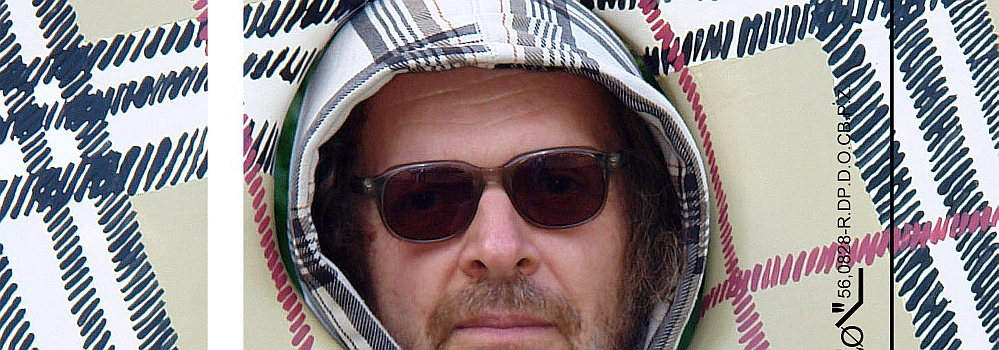Proč
je tak legrační,
když holky hážou kameny...
Bolest
vody.
Existuje dnes u nás jakási vynucená představa, přerostlá už
v trend, že je třeba rozpustit
formy umění do tzv. běžného života, nebo-li běžně žité
sociální reality a nacházet v této rozpuštěnosti smysl. Čímž
je mimo jiné silně akcentovaná otázka funkce umělcovy
existence, kdy odpovědi většinou zní, že to čemu jsme věřili
že je umění, nemá v našem životě a pro náš život už
žádný, nebo mizivý smysl, čímž umění dostává jiný
obsah, který budeme muset i jinak označovat. Úzkost, strach,
který tak vzniká
z tlaku společnosti, že umění jako takové ztratilo svůj
smysl ve své společenské funkci a tím je zásadně
postradatelné, nutí umělecký svět k přizpůsobování
se, tedy k neviditelnému splynutí se sociální realitou.
Navíc se toto splynutí definuje jako výhra. Trochu to sice připomíná
zvulgarizovanou podobu Wittgensteinovy úvahy o „otevřených
pojmech“ (totiž
takových, které nelze přesně vymezit; objímají jevy, které
jsou si jenom podobny) na jejímž
základě se již v druhé půlce 50 let píše, že umělecké
dílo nemusí existovat v podobě nějaké věci, ale pouze a
jenom v mysli. Čili nemusí
tak existovat žádné nutné, postačující znaky, podle
kterých by se dala díla klasifikovat jako umělecká, kdy je
sice nazýváme stejným slovem, ale nemusí mít žádný společný
rys. To mimo jiné v tomto kontextu znamená, že slovo umění
můžeme používat pro cokoliv. Lákavá, ale i snadno zneužitelná
a zneužívaná představa, která však kupodivu může, což se
argumentačně potvrzuje, i když je to překvapivé,
zkonzervativnět, zakademičnět, být prostě konvenčním šlágrem,
jehož manuál je přehledný a tak každému k dispozici,
bohužel většinou s falešným pocitem, že pak přináší
něco jiného, nového.
Kacířsky si myslím, či spíše dnes neurčitě cítím,
opak. Kdyby se formy umění na základě vlastní paměti, měly
spíše svinout do
své koherentní, autonomní
podoby. A tuto
svou intenci, toto svébytné území, a jeho jednotlivé zóny si
tvrdě chránit, před všemi, který jim pohrdají.
Stát se vzácným, nedostupným, ale i nepřijatelným.
Rozbít tak tvrzení, že umění je pouhá pojmová fikce. Tím však
rozhodně nemyslím onen romantizující sediment, že by
se umění mělo
chápat a vnímat jen jako, krásné, estetické, a tím posléze
vyprázdněné dekorativní kategorie v umělém území.
Ctím nečekanosti, které umí vyvolávat pojmové krize,
chcete-li i provokativnost, která chrání umění před tím,
aby se stalo neškodným, ale taky vím, že umění nemůže změnit
svět a v tom je jeho traumatická marnost. Proto vítám
tuto marnost jako vyšší smysl, nikoliv však smíření
ve smyslu milosti, ale výhradně jako pochybnost. Paradoxně tím
zpětně potvrzuji roli umění jako něco nepřítomného.
Jiří
David
Why is it so funny when
girls throw stones...
Water pain.
Nowadays,
there is a sort of (en) forced idea in our cultural milieu,
somehow grown into the trend, that it is necessary to dissolve
forms of art in the so-called common life, or - in other words -
everyday social reality we encounter, and moreover, to find
meaning within such dissolution. By this, among other things, the
issue of an artist´s existence and function
is strongly accentuated, with the following answers mostly: what
we have believed that art is, has no meaning, or negligible
meaning in and for our life anymore. Consequently, art acquires
different meaning which we will have to denote differently as
well. Anxiety and fear thus emerging due to the pressure of
society – because art as such has lost its meaning in its
social function and therefore it is as a matter of principle
something we can do without – push the milieu of art into
adaptation, into the invisible merging with the social reality.
And on top of that, such merging is defined as victorious. It
reminds one slightly of simplified (or simplistic) version of
Wittgenstein´s consideration on “open concepts“ (that
is, those that cannot
be exactly delimited; they enclose phenomena which only are
similar to each other), on the basis of which it was written, in
the late 50s of the 20th century already, that a work of art
does not have to necessarily exist in the form of a particular
object, but only and solely in one´s mind. So, no necessary or
sufficient signs have to exist according to which works are to be
classified as of art; we do call these works the same, but they do
not need to have any common feature. Apart from other things, it
means in this context that we can use the word of
“art“ for anything. It is an attractive, but
also easily misusable and misused idea, which can surprisingly
– and there have been arguments to prove this, however
surprising it can seem to be - become conservative, academic,
simply become a conventional evergreen with a clear
manual, therefore available for and to everyone, unfortunately
with a false feeling that everyone can then offer something
“different“, something “new“.
In a heretical way, I think, or rather I indistinctly
feel, the opposite. If only forms of art, on the basis of their
own memory, could rather curl up to their coherent, autonomous
shape. And if only they could preserve
and protect fiercely their intention, their independent
territory and its individual zones, from all who despise art.
Become precious, unavailable, but unacceptable as well. Break the
argument that art only is fiction of concepts this way. By what I am
saying, I do not mean that romanticizing sediment (that is,
art should only be understood and perceived as beautiful,
aesthetic) or emptied decorative categories in an artificial
territory. I do appreciate the unexpected able to provoke
crises of concepts, provocativeness, if you like, which protects
art against becoming harmless. But I know as well that art
cannot change
the world, and this is where its traumatic futility comes from.
That is why I welcome this futility as a higher
meaning,
but not as a conciliation in the sense of mercy, on the other
hand, exclusively as doubt. Paradoxically, I retrospectively
confirm the role of art as something absent.
Jiří
David |



